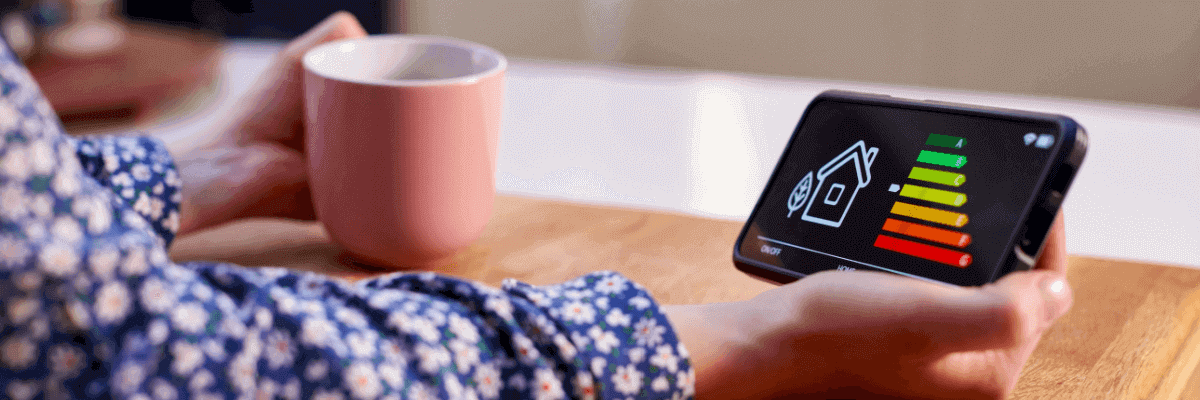KEY POINTS
- Electricity usage monitors provide real-time insight into how and when you consume electricity.
- There are three types of electricity usage monitors: wireless energy monitors, online energy monitors and smart plugs.
- Electricity usage monitors typically cost between $30 – $500 and the most popular brands and models can be self-installed.
On this page:
Compare energy prices
Here are some sponsored deals from the retailers on our database that include a link to the retailer’s website for further details. These are products from referral partners†. These costs are based on the Ausgrid energy network in Sydney but prices may vary depending on your circumstances. This comparison assumes general energy usage of 3900kWh/year for a residential customer on a single rate tariff. Please use our comparison tool for a specific comparison in your area and to see other products in our database that may be available. Our database may not cover all deals in your area. As always, check all details of any plan directly with the retailer before making a purchase decision.
|
9% Less than reference price |
$1,791 Price/year (estimated) |
Go to Site |
Here are some sponsored deals from the retailers on our database that include a link to the retailer’s website for further details. These are products from referral partners†. These costs are based on the Citipower network in Melbourne but prices may vary depending on your circumstances. This comparison assumes general energy usage of 4000kWh/year for a residential customer on a single rate tariff. Please use our comparison tool for a specific comparison in your area and to see other products in our database that may be available. Our database may not cover all deals in your area. As always, check all details of any plan directly with the retailer before making a purchase decision.
 |
|
10% Less than VDO |
$1,392 Price/year (estimated) |
NA |
How does an energy monitor work?
Not to be confused with smart meters, energy monitors provide historic and real-time electricity usage information, helping users identify when (hourly, quarterly and annually) and how they’re using power.
Most electricity usage monitors that have access to your tariff information can also calculate how much your energy usage is costing you and warn you if you’ve exceeded a pre-set usage level. This can be handy for tracking time of use tariffs, particularly when watching for peak and off-peak times.
What are the benefits of using an electricity usage monitor?
In addition to tracking usage, there are some other popular uses for home energy meters (depending on the brand, type and model). These include:
- Monitoring solar energy generation (if you have solar panels installed) — this includes what is exported back to the grid and how much is used at home (if you have a net meter installed).
- Analyse usage patterns to detect which appliances are putting a strain on your energy bill.
- Tracking energy habits within the home, such as the times of the day when energy is consumed the most.
It is important to keep in mind that installing an electricity usage monitor won’t automatically reduce your electricity usage. The power monitoring device acts as a guide to help you change your energy habits.
Depending on what your usage monitor reveals to you about your energy consumption, here are some possible steps you can implement to reduce your energy bills:
- If you have appliances that consume a large amount of energy, consider replacing them with energy-efficient alternatives or solar peripherals that perform the same function (e.g. solar pool pump).
- If you discover you’re consuming much more energy during summer and winter, consider making your home more energy efficient through passive features such as natural ventilation.
- If you are on a time-of-use tariff and you discover that you’re consuming more energy during peak hours, you could:
- Consider switching to a single rate tariff to avoid overpaying.
- Apply for a dedicated controlled rate tariff for high-energy-usage appliances.
- Supplement grid energy by installing a solar panel system and solar battery to generate, store, and use solar energy during peak periods.
Compare cheap electricity plans
Here are some of the cheapest published deals from the retailers on our database that include a link to the retailer’s website for further details. These are products from referral partners†. These costs are based on the Ausgrid network in Sydney but prices may vary depending on your circumstances. This comparison assumes general energy usage of 3900kWh/year for a residential customer on a single rate tariff. Please use our comparison tool for a specific comparison in your area. Our database may not cover all deals in your area. As always, check all details of any plan directly with the retailer before making a purchase decision.
Here are some of the cheapest published deals from the retailers on our database that include a link to the retailer’s website for further details. These are products from referral partners†. These costs are based on the Citipower network in Melbourne but prices may vary depending on your circumstances. This comparison assumes general energy usage of 4000kWh/year for a residential customer on a single rate tariff. Please use our comparison tool for a specific comparison in your area. Our database may not cover all deals in your area. As always, check all details of any plan directly with the retailer before making a purchase decision.
Here are some of the cheapest published deals from the retailers on our database that include a link to the retailer’s website for further details. These are products from referral partners†. These costs are based on the Energex network in Brisbane but prices may vary depending on your circumstances. This comparison assumes general energy usage of 4600kWh/year for a residential customer on a single rate tariff. Please use our comparison tool for a specific comparison in your area. Our database may not cover all deals in your area. As always, check all details of any plan directly with the retailer before making a purchase decision.
Here are some of the cheapest published deals from the retailers on our database that include a link to the retailer’s website for further details. These are products from referral partners†. These costs are based on the SA Power network in Adelaide but prices may vary depending on your circumstances. This comparison assumes general energy usage of 4000kWh/year for a residential customer on a single rate tariff. Please use our comparison tool for a specific comparison in your area. Our database may not cover all deals in your area. As always, check all details of any plan directly with the retailer before making a purchase decision.
Electricity usage monitor brands in Australia
There are plenty of home energy monitors on offer in Australia. According to Reduction Revolution and Bunnings, these are some of the popular brands and models currently available in Australia:
- Arlec Grid
- Connect Black Smart Plug In Socket With Energy Meter – $15.00
- Efergy:
- E-Max Energy Monitor (single phase) – $149.00
- Powerpal:
- Energy Monitor – $119.00
- Powersensor:
- Energy Monitor (single phase) – $199.00
- Laser Smart Home:
- Smart Plug With Energy Monitor (2 pack) – $37.50
Do take note that these examples are not reflective of all brands and models on the market. Prices sourced from Reduction Revolution and Bunnings websites and are accurate as of 18/07/2025.
Types of power monitoring devices
There are a few different types of energy monitors designed to suit different budgets and lifestyles. In some cases, different types of energy monitors can work together. These are:
Wireless energy monitors
These are tablet-like devices that connect and communicate with sensors installed in the designated energy monitor.
The Efergy E-Max Energy Monitor is one such example, with a dedicated 7.9-inch full colour display for ease-of-monitoring.
Online energy monitors
Online energy monitors, such as the Powerpal Energy Monitor, operate similarly to wireless energy monitors.
However, instead of having a separate display tablet, the data feeds are accessible via the internet or a smartphone app.
Smart plugs
Smart plugs are mini versions of an electricity monitor. These plugs can only be used to monitor the energy usage of a specific appliance or power port.
Remote device control via a smartphone app may also be applicable with some smart plugs and suitable WiFi connections.
Some smart plugs can also work in tandem with other energy monitors, such as Powersensor’s ‘Essential Solar Kit’, containing one sensor (online energy monitor) and a smart plug to be used as one complete system.
Home energy monitor prices
Home energy monitors can cost anywhere between $50-$300 in Australia, depending on the brand, place of purchase and package used. Installation fees may also come at an additional cost for some households.
Smart plugs can cost anywhere between $20-$50 per plug. However, these devices only measure the usage of one appliance, and costs can vary.
How to install a home electricity meter
Energy monitors typically require sensors to be installed on the electricity meter at the property. The most popular brands and models in Australia can typically be self-installed with little hassle.
However, some installations may need to be conducted by a licensed electrician. Some installations will be a bigger job than others, depending on the type of energy meter you have and the number of sensors required for the energy monitor.
If you have a smart meter, the process may also be simpler. However, it’s always best to consult with a licensed professional before commencing any work on your electricity meter box.
Should I buy an electricity usage monitor?
Purchasing an electricity usage monitor is useful for tracking your energy usage and changing any expensive energy habits you may have.
The most value will come to those who choose to act on this information — especially former victims of bill shock.
Those who aren’t invested in monitoring their usage and making the necessary changes may not see the same value as those willing to make different energy choices.
Electricity usage monitoring is a great way to start the journey to lowering energy bills, but you may also be paying too much for energy.
You can compare electricity companies and plans across Victoria, New South Wales, South East Queensland, South Australia, Australian Capital Territory and Tasmania by clicking the button below.



Share this article